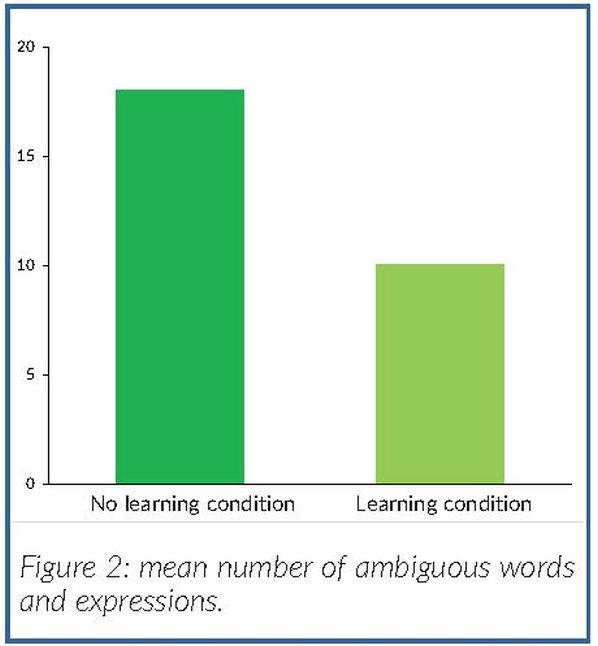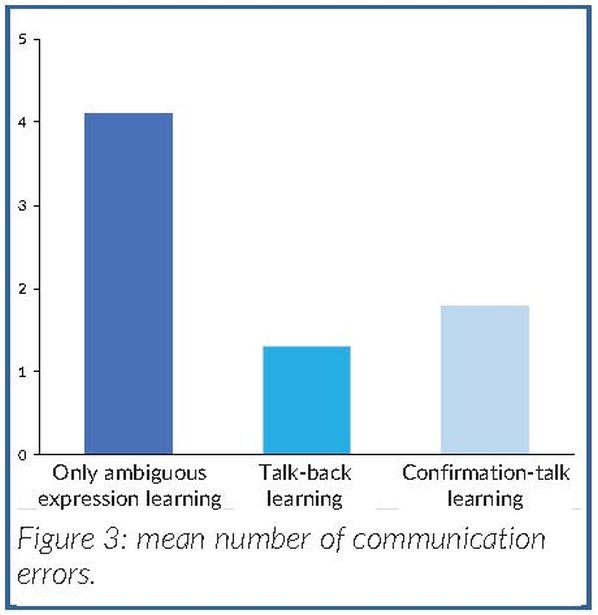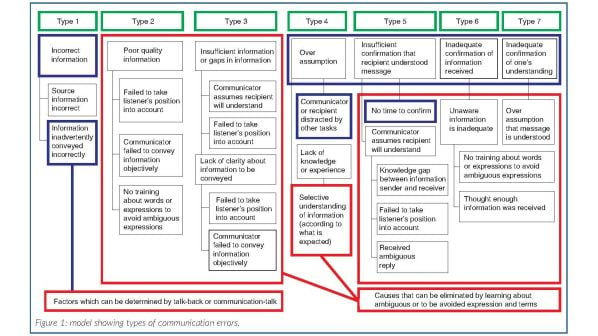COMMUNICATION errors in railway systems could pose a serious threat to safety. While railway companies in Japan use various measures to prevent such errors, accidents and incidents as a result of communication errors are still not uncommon.
The definition of a communication error differs between researchers or research fields. In our study, we defined communication errors as follows:
- limited to verbal communication errors in the working place
- excludes communication that failed because of defects in physical equipment, and
- excludes communication errors due to the particular relationship between communicators.
RTRI analysed 1706 accident reports and 97 communication error incidents. This analysis identified seven types of communication error which were caused by the following:
- incorrect information
- poor quality information because of the way it was communicated, the language used, the amount of information or the information was ambiguous
- insufficient information or gaps in the information
- over assumption
- insufficient confirmation that the recipient understood the message
- inadequate confirmation of the information received, and
- inadequate confirmation of one’s understanding.
Communication model
The relationship between error factors excluded by the analysis were examined and a communication error model was constructed (Figure 1). For example, when an error was caused by insufficient information or gaps in the information, there could be two underlying factors: either a lack of clarity about what information needs to be conveyed or the communicator assumes that the recipient will understand. Failure to take the recipient’s point of view into account and the communicator’s failure to convey the information’s position could be the underlying factors in a lack of clarity about what information needs to be conveyed.
It is necessary to exclude these error factors in order to prevent communication errors. By referring to other communication error studies and preventitive measures already used in railways and other fields, talk-back and confirmation-talk were considered effective methods to exclude these error factors.
The factors in the blue frame in Figure 1 can be eliminated by reinforcing the confirmation. It is important to use effective confirmation methods. Talk-back is a well-known measure whereby the recipient of the information simply repeats the information they received to confirm that they have heard it correctly. Confirmation-talk is also used to prevent communication errors: the recipient of the information rephrases or summarises what they have heard or responds by saying out loud how they will follow up the order, to confirm that they have understood the information or the order correctly.
The factors in the red frame in Figure 1 can be eliminated by improving skills to detect ambiguous expressions and words that could cause communication errors and avoid using them. For example, a number of different sub-factors contribute to over assumption:
- insufficient confirmation that the recipient has understood the message
- inadequate confirmation of received information, and
- inadequate confirmation of one’s understanding.
Even if the communicator obtains confirmation of the information conveyed or understands the message by using talk-back or confirmation-talk, these sub-factors could still result in insufficient confirmation or superficial (form only) confirmation. Therefore, a method was devised for developing skills in detecting ambiguous expressions that could lead to an over assumption.
In this method, the learner watches a video where two people in different rooms are communicating with each other via radio. Detailed procedures of talk-back and confirmation-talk have not yet been clearly established. Therefore, in this study, we defined the procedures for talk-back and confirmation-talk and developed a learning method that consists of learning to detect ambiguous expressions, talk-back technique learning and confirmation-talk technique learning.
The video shows a worker building a toy car by following instructions given via radio from an instructor in another room. While watching the video, the learner tries to detect ambiguous expressions or words that may cause communication errors and if any are discovered, the learner writes them down. This process aims to raise the learner’s awareness of ambiguous expressions or words, thereby helping the learner to avoid using these expressions, or ensuring that the meaning is confirmed during an exchange.
Ambiguous expressions
An experiment was conducted to confirm the effectiveness of learning to detect ambiguous expressions.
Graduate and undergraduate students participated in the experiment, in pairs. They were put in one of two learning scenarios: learning condition or no learning condition.
Under the former, after learning to detect ambiguous expressions, one of the participants instructs the other how to make the toy from the other room over the radio, while the participant listening to the instructions makes the toy. Under the no learning condition, the participants just give instructions or make the toy. The conversations and work were recorded on video.
We compared the mean number of ambiguous expressions used under the two conditions. The result showed that the number of ambiguous words used under the learning condition was statistically significantly smaller than under the no learning condition (Figure 2). These results confirmed that the method raises the participant’s awareness of ambiguous expressions or words, thereby helping to avoid using them.

PowerPoint slides and videos of model communication were used to convey the techniques of talk-back and confirmation-talk, which were defined as follows:
- Talk-back - recipients of the information simply repeat the information, while senders confirm that the repeated information is correct and reply correct, and
- Confirmation-talk - recipients of the information rephrase or summarise what they have heard and/or respond by saying out loud how they will follow up the order, and both information senders and receivers must confirm if they are in any doubt.
An experiment was conducted to confirm the effect of these learning techniques. Graduate and undergraduate students participated in the experiment, in pairs. They were assigned to one of three groups: only ambiguous expression learning, talk-back learning and confirmation-talk learning.
First, the participants in each group learned to detect ambiguous expressions. Secondly, the participants in the talk-back group and confirmation-talk learning group learned and practiced the talk-back or confirmation-talk technique. In the final step, one of the participants in each group instructed the other on how to make the toy from the other room via radio. Communication errors under each condition were counted and compared.
The result showed that the number of communication errors was statistically significantly larger when participants had only been trained to learn to detect ambiguous expressions, than for those who had also received training in talk-back or confirmation-talk techniques (Figure 3). These results confirmed the effectiveness of training in talk-back and confirmation-talk techniques.

To transfer this training method easily, we developed software and textbook teaching materials.
In the first step, the mechanism of communication errors is explained. Secondly, learners perform ambiguous expression learning techniques. Next, the talk-back and confirmation-talk techniques are explained and some sample videos are shown. After these three steps, it is important to practice what they learned by communicating in pairs, videoing the scene, and reviewing their communication to raise the learning effect brought about by this method. Repeating this training method with due consideration for practice and looking back on their communication are shown in the text.
A number of Japanese railway companies are in the process of implementing this method.

